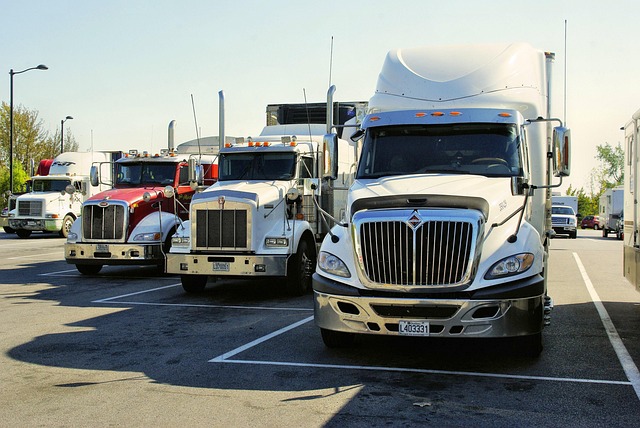Looking to register your car in California? This comprehensive guide breaks down the process step-by-step, ensuring a smooth transition. From understanding key requirements to securing your vehicle’s unique Vehicle Identification Number (VIN) through verification, you’ll learn what’s needed. Gather essential documents, complete application forms accurately, and pay the required fees on time. Before you know it, you’ll have your California registration plate in hand!
- Understand California Car Registration Requirements
- Gather Necessary Documents for VIN Verification
- Perform Vehicle Identification Number (VIN) Check
- Complete Application Forms and Pay Fees
- Receive Your California Registration Plate
Understand California Car Registration Requirements

Before registering your car in California, it’s crucial to understand the state’s specific requirements. One key aspect is ensuring your vehicle has passed an emissions test, which is typically done through a certified inspection station. This inspection checks for pollutants and ensures your car meets the state’s environmental standards.
Additionally, California requires a Vehicle Identification Number (VIN) verification process. This involves confirming the VIN on the vehicle matches the records in the National Motor Vehicle Title Information System. You can facilitate this with a mobile VIN verifier or undergo a traditional VIN inspection at an authorized location. Meeting these requirements is essential to legally register your car in the Golden State.
Gather Necessary Documents for VIN Verification

To register your car in California, you’ll need to go through a VIN (Vehicle Identification Number) verification process. First, gather all essential documents related to the vehicle. This includes the title, registration certificate, and proof of insurance. Additionally, ensure you have your driver’s license and any other required identification documents. For a smoother process, consider using a mobile vin verifier or mobile vin inspection service that can help verify your VIN data digitally, making it easier to prove ownership and avoid potential delays.
Once these documents are ready, you can start the registration process with the California Department of Motor Vehicles (DMV). This involves filling out necessary forms, providing proof of identity, and passing the required inspections. Properly prepared documents will make your vin verification more efficient and ensure a faster car registration in California.
Perform Vehicle Identification Number (VIN) Check

Before registering your car in California, it’s crucial to perform a Vehicle Identification Number (VIN) check. This step ensures that the vehicle is genuine and has not been reported stolen or had its identity tampered with. You can verify the VIN through various means, including using an official California Department of Motor Vehicles (DMV) form, visiting a local DMV office, or even conducting a simple mobile VIN inspection using apps designed for this purpose.
A mobile vin verifier can be particularly handy as it allows you to check the vehicle’s history from the comfort of your own home or while at a car dealership. This verification process is essential in light of California’s stringent regulations aimed at curbing fraud and ensuring road safety. By confirming the VIN, you’re taking a significant step towards securing a valid and safe registration for your vehicle.
Complete Application Forms and Pay Fees

To register your car in California, you’ll need to complete several forms and pay associated fees. Start by obtaining an application from the California Department of Motor Vehicles (DMV) or downloading it from their website. Fill out the forms accurately, providing all the necessary information, including your personal details, vehicle specifications, and proof of insurance. One crucial step is the VIN verification process, where you’ll need to confirm your vehicle’s unique identification number (VIN). This can be done through a mobile VIN inspection or by visiting an authorized location for a vin inspection.
After ensuring all forms are complete and accurate, submit them along with the required fees to the DMV. Fees vary depending on various factors, such as the type of vehicle and whether you’re registering a new or used car. Make sure to include payment for any additional services like emissions testing or title transfer if applicable. With these steps completed, you’ll be one step closer to officially registering your vehicle in California.
Receive Your California Registration Plate

After completing the registration process, it’s time to receive your California registration plate. This crucial step finalizes your vehicle’s legal status in the state. Once approved, the California Department of Motor Vehicles (DMV) will issue a license plate that corresponds to your unique Vehicle Identification Number (VIN). This VIN is a 17-character code that serves as a digital fingerprint for your car and is essential for various processes like insurance claims and vehicle history reports.
To ensure everything is legitimate, consider utilizing a mobile vin verification service or a vin inspection tool. These services streamline the process by cross-referencing your VIN with state databases, providing instant validation of your plate’s authenticity. A reputable mobile vin verifier can offer this convenience right at your location, making it easier than ever to comply with California’s registration requirements.
Registering a car in California involves understanding state requirements, gathering essential documents for VIN verification, completing an application with accurate information, and paying associated fees. After meeting these steps, you’ll receive your official California registration plate, ensuring your vehicle’s legal status on the state’s roads. Remember, proper documentation and timely registration are crucial to avoid penalties and maintain a smooth driving experience in California.



